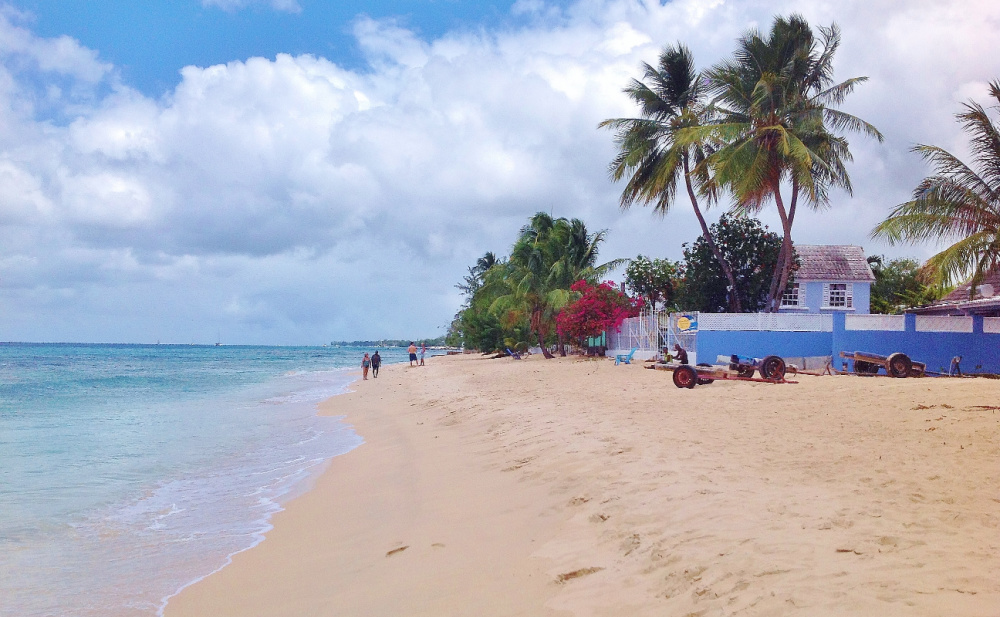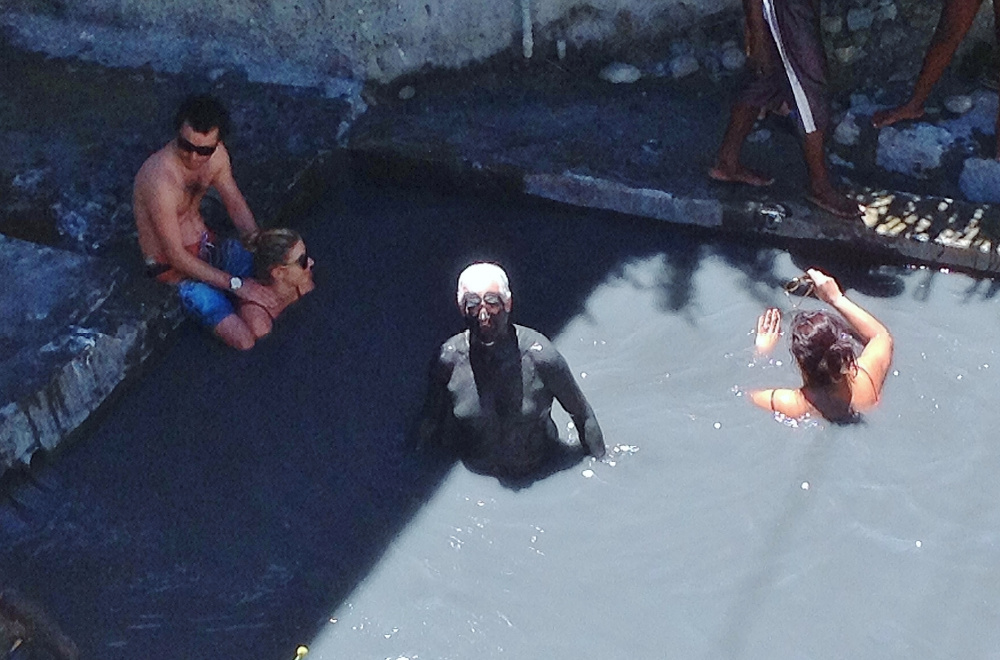‘Touring the Caribbean: From volcanos to waterfalls, the islands never fail to impress’

Continuing on our cruise from Curaçao, we headed next to St George’s Grenada and saw our well-anticipated first Caribbean rainforest. Then on to Bridgetown, Barbados, followed by Castries, St Lucia, where we had some exciting adventures.
Grenada
Rather than book a tour with the cruise line, a group of us who had met on the Cruise Critic website decided to book an independent tour. We had done this before on other cruises because it gave us the flexibility to control the locations and timing of the tour, as well as pay a much lower price for the tour. Limiting the group size to eight people whom we had already gotten to know via Cruise Critic was another plus. We chose the West Coast half-day tour with AJ Meddy Tours.
First, we were taken to the Dougaldston Spice Estate where, amongst other spices, cacao beans were processed. Next we were off to the Gouyave Nutmeg Factory and to the Clarke’s Court Rum Distillery where we got to sample a few shots as well as see the workings of the plant. We also visited the Concord Waterfall and the Grand Etang National Park where we fed the wild mona monkeys. These were originally native to Africa, but were transported to Grenada on slave ships in the 18th Century. We had just enough time to wander around St George’s town on our return before embarkation. We were not going to be late this time!
Barbados
Late changes to our plans meant we simply grabbed the first tour bus leaving port in Bridgetown. It was just doing a half-day trip up the west coast as far as Speightstown, calling in at various beaches and places of interest along the way.

When the driver found out Hubby was Australian and followed the cricket (unlike the US passengers) and played golf, he detoured to the Kensington Oval west of Bridgetown, which dates back to 1882. It was redeveloped in 2007 in time for the World Cup, which Australia just happened to win. The locals are very proud of it. He then took us for an eye-boggling drive through the exclusive resort area of Sandy Lane, which boasts a famous golf course. In the same parish district we also saw the St James Anglican Church which is the oldest on the island, having been built from local coral and stone in the early 1680s, and which is largely intact today. Next we went up to the highest point of the island – Mount Hillaby – from where we had magnificent views.
On the way back to Bridgetown we visited an area mainly settled by the descendants of freed slaves – Rock Hall Freedom Village. There we saw the Rock Hall Freedom Monument, which pays homage to three specific families. Britain’s involvement in the once-prolific slave trade and the slaves’ efforts to have it abolished is also marked by the Bussa Emancipation Statue at a roundabout just east of the city. Emancipation Day is celebrated each year in August. Barbados gained independence and became a member of the British Commonwealth in 1966, which explains their love of cricket and the way they drive on the left side of the road, which our new-found US friends found quite unsettling. The Parliament of Barbados is modelled on the Westminster system and the Parliament Buildings are a protected UNESCO site.

St Lucia
A group of eight of us booked with Cosol Tours for a full day independent excursion, rather than take the one offered by the cruise ship. The tour proceeded south down the west coast from Castries, the capital. St Lucia is an independent member of the British Commonwealth, but because it was once occupied by the French, the unofficial common language is a French patois. As we left Castries we stopped at a viewpoint on Morne Fortune to take photos and then continued on to a banana plantation. Bananas are St Lucia’s main export crop. We were shown how the plants were propagated and how they developed their fruit. Being from Victoria, I hadn’t realised that after the fruit is harvested the plant is cut down ready for a new one to take its place. The growing fruit is covered in blue plastic to protect it from birds and the weather so they are unblemished when they are harvested. Our guide also showed us a cashew tree, so we could fully appreciate why these wonderful nuts fetch such a high price. They are gathered, then roasted, then shelled by hand, one nut (seed) per fruit. The apple part at the top of the fruit can also be eaten or used to make alcohol.

Although we had only just eaten breakfast on the ship, our next stop was at a restaurant high up on a hill near the village of Canaries, where we feasted on local delicacies such as coconut cakes and cookies, johnny cakes, fishcakes, banana ketchup and local fruits such as fresh coconut, pineapple, bananas, mangoes, sugar apple and soursop.
Another fantastic view appeared as we approached the town of Soufriere – the magnificent Pitons rising up from the sea. They are called Gros Piton and Petit Piton and are a World Heritage site. Between the two is a bay with a resort at Jalousie Beach. We took a small launch out from the Soufriere pier around the base of Gros Piton to the resort where we spent an hour or so relaxing in the shade or snorkelling on one side of the bay. The fish were not too plentiful but the coral and seaweeds were more colourful there than we had found in Aruba.
Back up into the hills again we finally came to the island’s so-called drive-in volcano, Sulphur Springs. As you can imagine, we smelled it before we saw it! You can’t actually drive right in, but you park very near boardwalks and paths that lead to the craters which has big bubbling pools of mud with sulphur steam emitting from them. There is also a black hot mud pool ready for the adventurous to bathe in and lather themselves up with the mud, which is said to contain medicinal properties. Hubby had a bath and looked quite odd with his silver hair!

The mud was quite sticky and hard to remove even at the change room showers, so our next stop afforded him another opportunity to clean it off in the waterfall at Toraille. I was feeling a bit hot and salty from snorkelling, so was keen to try swimming there, too. Wow! That water was so cold and it hit like a ton of bricks! But it marked a refreshing end to our exciting day on St Lucia.








 Proudly Australian owned and operated
Proudly Australian owned and operated